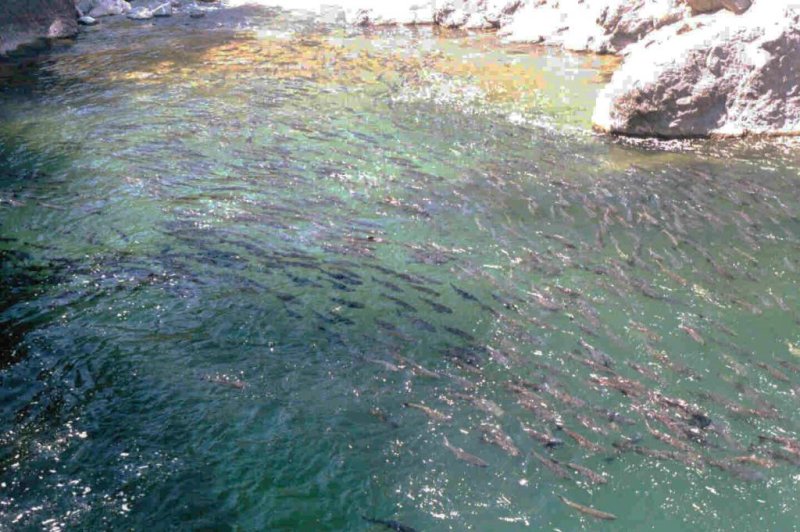
New research suggests global warming and overfishing are making worse the problem of nutrient overload in the ocean, which causes harmful algal blooms. Photo by Mapbox/Flickr
Aug. 17 (UPI) -- Nutrient overload caused by excess agricultural runoff can seriously harm coastal marine ecosystems, triggering algal blooms that emit toxins and rob marine life of oxygen.
Research published Monday in the journal Frontiers in Marine Science suggests the damage is magnified by other human activities, including overfishing and climate change.
For the new study, researchers reviewed dozens of papers on nutrient pollution, or eutrophication, revealing the complexity of the problem.
To slow and reverse the damage, authors of a new paper suggest a multifaceted approach absorbs the insights of a variety of experts and considers both land-use and ecology.
RELATED Summer toxic algae blooms may be growing threat to health
"The threats posed by eutrophication include reduced water clarity, oxygen depletion, and toxic algal events that result in critical habitat losses such as coral reefs, seagrass meadows and mangrove forests," study author Thomas Malone said in a news release.
"Other serious consequences include mass mortalities of marine animals, loss of biodiversity and threats to human health," said Malone, a professor of ecology at the University of Maryland Center for Environmental Science.
In reviewing the literature on eutrophication, Malone and co-author Alice Newton, professor of marine science at the University of Algarve in Portugal, identified more than 700 dead zones, where algal blooms regularly deplete oxygen levels.
RELATED Deep reefs could offer refuge to vulnerable marine life as oceans warm
Their mapping effort showed many problem areas overlap with many of the wonders of the ocean world, including the Great Barrier Reef.
Their analysis showed that while agricultural fertilizers account for the majority of the nutrient pollution that enters the ocean, human sewage, animal manure and fossil fuel combustion also contribute to the problem.
The new research showed that the problem of eutrophication is made worse by overfishing and other human-caused problems, including climate change. Warming temperatures are also partially responsible for increased river runoff, which helps carry larger amounts of nutrients into the ocean.
RELATED Global warming fuels algal bloom disrupting fisheries in Arabian Sea
As well, as human release more carbon dioxide into the atmosphere, the ocean absorbs more and more CO2, increasing ocean acidity. Oxygen-deprived ocean layers amplify the problem of acidification, causing problems for calcifying organisms including shellfish, planktonic pteropods and corals.
Malone and Newtown suggest any comprehensive solution to the problem of eutrophication should consider the input of scientists, policy makers and the public.
While more sustainable agricultural practices and land-use changes can help reduce nutrient overload at its source, the researchers suggest ecosystem solutions, like restoring mangroves and marshes, can help prevent excess nutrients from reaching marine ecosystems.
"This valuable review shows the commonalities in the timing, causes and consequences of nutrient pollution of coastal waters in many otherwise very different regions of the world," said Donald Boesch, a professor of marine science at the University of Maryland.
"Our progress in reversing this important cause of ecosystem degradation will be limited unless we can reduce agricultural pollution through more effective regulations and incentives," said Boesch, who was not involved in the research.








